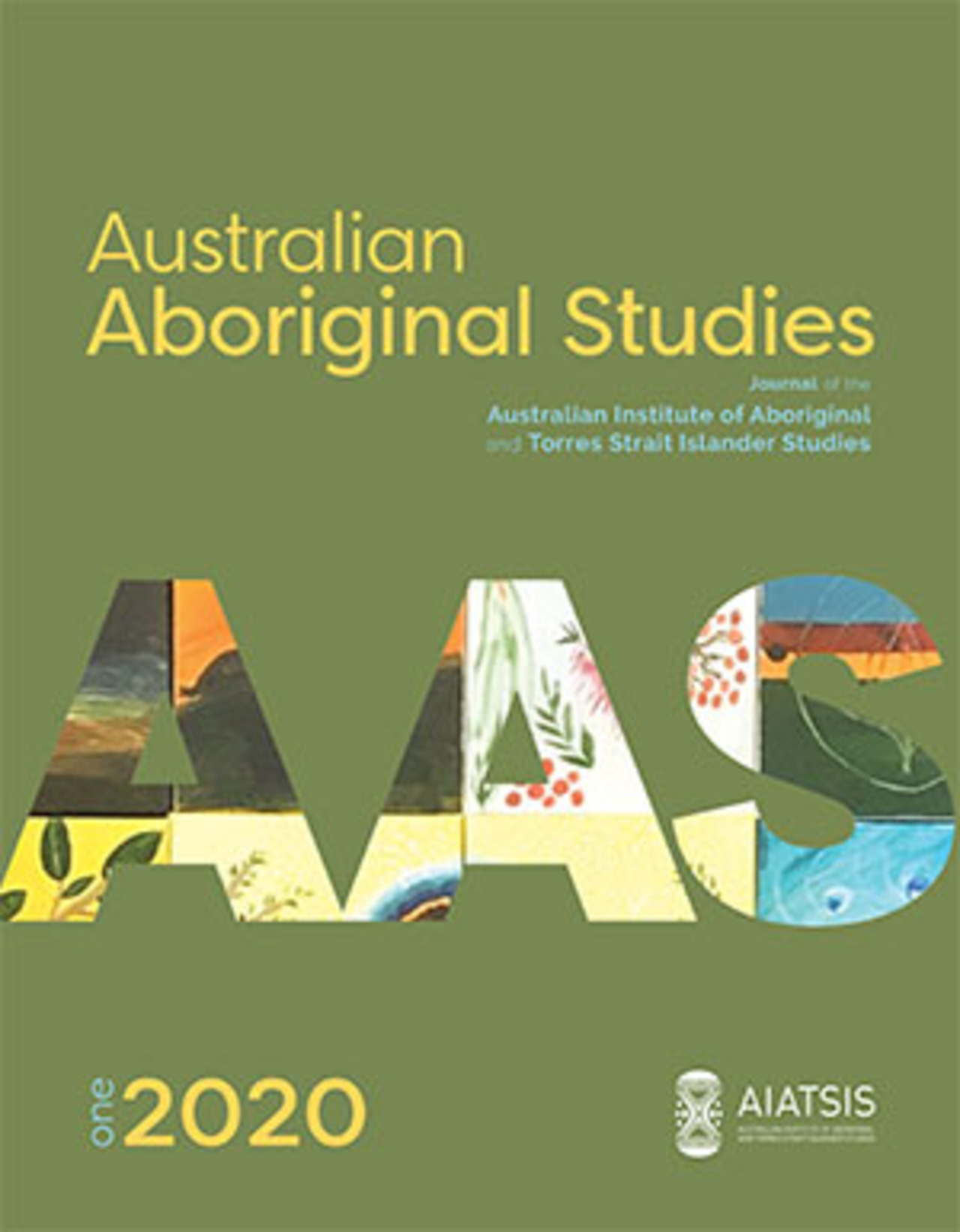Australian Aboriginal Studies: Issue 1, 2020
Editorial
Dr Lawrence Bamblett
Major articles
The experiences of Native American girls attending Sherman Indian High School
Jessa Rogers and Lori Sisquoc
Abstract: This paper describes a research project with Native American girls at Sherman Indian High School (Riverside, California). This work was guided by Sherman’s Cultural Leader, Lori Sisquoc, and Dr Jessa Rogers, a visiting Aboriginal researcher. This paper outlines the Talking Circle Methodology employed by Native female students at Sherman and the major themes that emerged from this Indigenous research. Native students in this project shared stories about their experiences as young Native women living away from home for schooling. Their voices express the challenges they encounter and experience as contemporary Sherman students and Native young women today.
Are Aboriginal people a threat to the modern nation? A study of newsprint coverage of a racial discrimination complaint
Heidi Norman, Mehal Krayem, Cale Bain and Therese Apolonio
Abstract: Recent research conducted by Thomas et al. (2019) reveals that mainstream
media over a 45-year period have propagated deep narratives about Aboriginal people, which has the effect of stymying Aboriginal peoples’ legitimate demands for recognition. ‘White mastery’, Thomas et al. (2019:236) argue, is one such deep narrative; it is the notion that denies the legitimacy of an Aboriginal polity by claiming that Aboriginal people are no different to the wider white body politic. With reference to coverage of a 2016 racial discrimination case and subsequent litigation, we argue the Australian newspaper reproduces a ‘white mastery’ deep narrative and discourses of ‘Indigenous privilege’ and ‘white discrimination’ that destabilise public support for allied human rights instruments and institutions, and undermine appreciation of Aboriginal agency and recognition.
Aboriginal research methods and researcher reflections on working two-ways to investigate culturally secure birthing for Aboriginal women
Rhonda Marriott, Tracy Reibel, Janinne Gliddon, Denese Griffin, Juli Coffin, Anne-Marie Eades, Melanie Robinson, Angela Bowen, Sally Kendall, Tracy Martin, Leanne Monterosso, Fiona Stanley and Roz Walker
Sensitive material — women’s business
Abstract: This five-year study investigated the cultural birthing practices, needs and requirements of Aboriginal women giving birth in urban settings, and their experiences of maternity care and views of birthing on Country. It also investigated how midwives perceive and support cultural security. The paper highlights the selection of research methods that complemented the project’s Indigenous methodological framework. Cultural lenses and diverse expertise translated the outcomes to recommendations about a culturally meaningful health system and professional practice and education aimed at supporting Aboriginal women’s birthing expectations in the future.
Our tailored research practices privileged culturally secure approaches to push back against Western knowledge paradigms that have dominated qualitative research undertaken with Aboriginal people. This paper describes the research methods chosen to manage complex data collection and analysis, and how we blended Indigenous-specific methods with compatible standard methods to support Indigenist and decolonising research practices. We include Aboriginal researcher reflections to highlight the importance of culturally determined research processes that result in high-quality, culturally meaningful research.
Presenting to hospital emergency: analysis of clinical notes for Indigenous and non-Indigenous patients with traumatic brain injury in North Queensland
Sarah Veli-Gold, John Gilroy, Alan Clough, Fintan Thompson, Michelle Fitts, Adrian Esterman, Jennifer Fleming, Paul Maruff and India Bohanna
Abstract: This study, led by two Aboriginal disability researchers using Indigenous standpoint theory, sought to identify, analyse and compare themes that emerged in the clinical notes of patients who presented with a Traumatic Brain Injury (TBI) to North Queensland hospital emergency departments. We analysed the clinical notes and identified six key themes that are relevant to understanding the differences in hospital emergency department characteristics of Indigenous and non-Indigenous people presenting with TBI in North Queensland. The themes are alcohol and assault; accidents and mishaps; traffic incidents; police involvement, non-compliance and/or aggression; sports; and seizures. Alcohol and assaults are a serious problem leading up to hospital presentations for Indigenous people. The themes together depict the chains of circumstances leading up to presentations along three dimensions: misadventure linked with mishaps in life; alcohol and violence; and individual health status. The study findings have implications for preventative
health care policy and practice to reduce the main characteristics — alcohol and violence — contributing to Indigenous people presenting with TBI. The findings of this study provide evidence to inform the substance abuse policies and programs funded under the Closing the Gap strategy, the National Disability Insurance Scheme and the National Drug Strategy 2017–2026.
Research report
Strengths and challenges of Aboriginal art centre marketing
Skye Akbar and Anne Sharp
Abstract: Aboriginal artists in Australia, and consequently art centres, sustain successful enterprises enabled by factors such as Aboriginal ownership, Aboriginal employment and acceptance of cultural mores by art centre managers. This paper contributes a foundational body of knowledge about marketing activities in two successful Aboriginal art centres in Australia that are run, owned and managed by Aboriginal people or have an Aboriginal business focus. It examines the complexities of marketing Aboriginal art in Australia. Interviews with respondents from the two Aboriginal-owned and operated art centres identify the advantages and challenges faced when marketing their product. Using an Indigenist research approach, the paper examines the additional challenges of operating in a postcolonial culture and in remote areas far removed from markets. It describes how these challenges affect the art centres’ abilities to undertake marketing activities that build availability for their products — both in the consumer’s mind (mental availability) and
in terms of distribution in time and space (physical availability). The findings are descriptive and identify the marketing challenges faced by the two art centres and the innovative strategies they have used to address these challenges and gaps in their knowledge and ability. The paper contributes to the body of research that aims to ensure that diversity in business research is inclusive of Aboriginal businesses, while identifying their unique aspects.
